Zombie Land Saga: The Complete Series Review
It’s that age-old story of girl meets… truck? One bright, sunny morning, Sakura Minamoto steps out of her house and into the road without looking, meeting a grisly end as she collides with a passing truck. That’s not the end of Sakura’s tale however, as ten years later she awakes in a spooky mansion filled with zombies, and she’s one of them! Resurrected by the mysterious necromancer Kotaro Tatsumi, Sakura and six other girls are tasked to save and re-energise Saga Prefecture by becoming popular idols, all the while trying to hide the fact that they are zombies. That’s certainly not going to be easy, and it’s even harder when your idols have hang-ups about their deaths that are going to have to be dealt with before they can even perform!

While on the face of things, Zombie Land Saga could be said to be an idol show, it’s actually a lot more than that: taking a lot of the genre’s common themes, combining them with its zombie concept and just rolling with it, producing one hilarious rollercoaster ride of a comedy. While idol fans will perhaps get more out of it due to how it plays around with idol culture, the sheer hilarity of the situations that the girls get into should tickle anyone’s funny bone.
The opening episode has the girls, who at this point have not fully awoken to their human consciousness and are still mostly in full zombie mode, throwing a debut live at a death metal festival, where they somehow entertain the crowd by just screaming and headbanging to an intense backing track; while the second has them engaging in a furious rap battle with each other, as they argue over their predicament live on stage and somehow fool the audience that an accidental decapitation is part of the act.
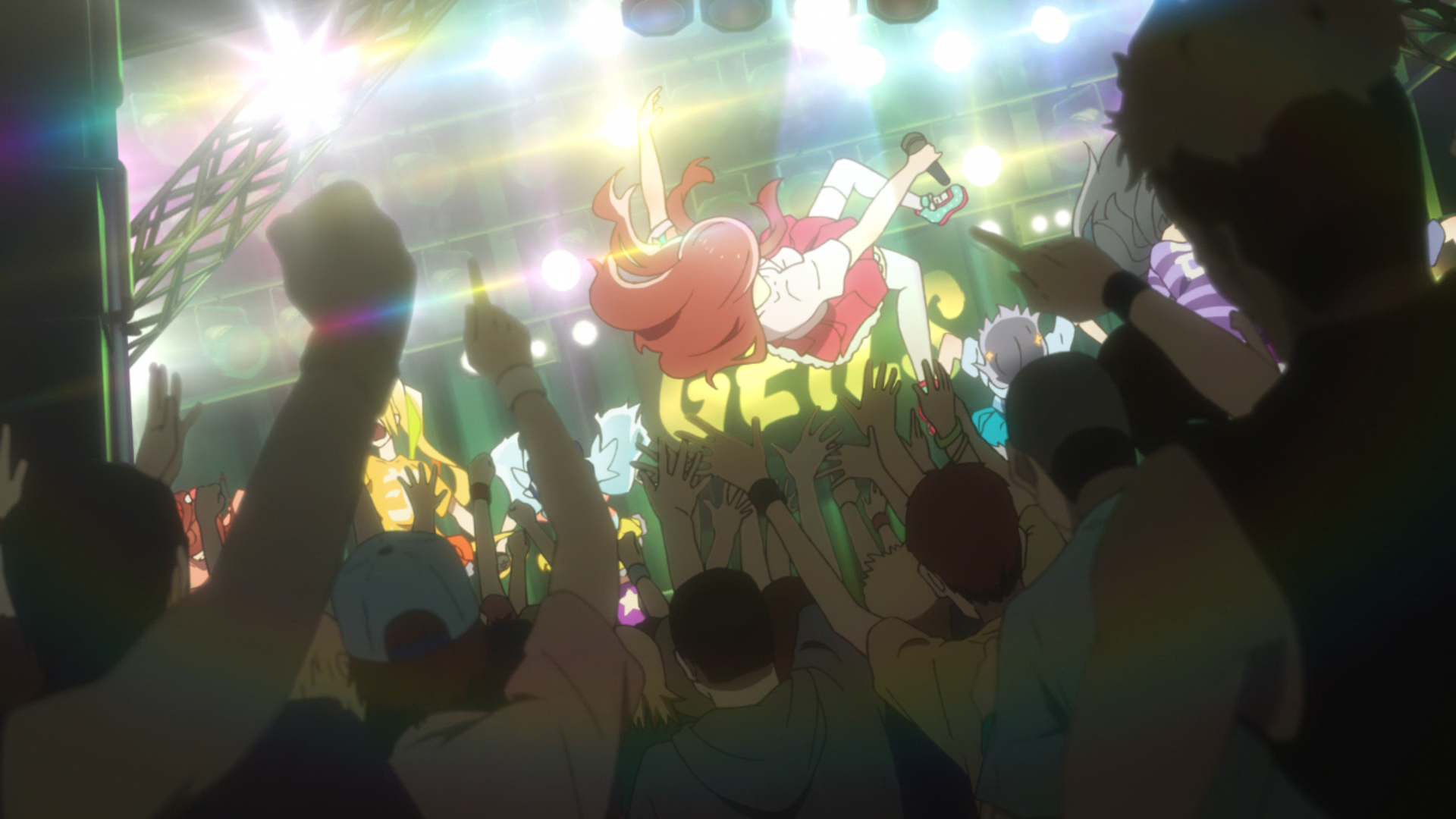
Its execution is so over-the-top I just couldn’t stop laughing for pretty much the entirety of the first half of the series, whether it was the encounters with the ever-suffering police officer (who always ends up scared out of his wits, the poor bloke), or the references to real life, where they have to make an advert for the Drive-In Tori chicken restaurant and participate in the Kashima Gatalympics, best summed up as an extremely muddy version of Total Wipeout. Every beat just hits so well, and while some of these things may be standard stuff for an idol show, by merging them with the zombie concept, it just feels like a whole fresh take on the genre.
This of course wouldn’t be possible without compelling characters, combining cute, lovable character designs that appeal visually with some powerful character drama. Each of the main cast is taken from a specific point in Japanese history which gives them their own unique flavour: Sakura is a typical teenager from the 2000s; Saki Nikaido is a biker gang member from the 90s; Ai Mizuno was part of one of the biggest idol groups of the past decade, Iron Frill; Junko Konno is an idol from the 80s; Yugiri is a 19th century courtesan; Lily Hoshikawa is a modern child actress; and Tae Yamada… well, we don’t know much about her but she seems to be just a random person pulled off the street. Each of them brings their own quirks to the table and, despite being completely different from each other, they become fast friends and it’s a joy to see them having a laugh together about being undead.
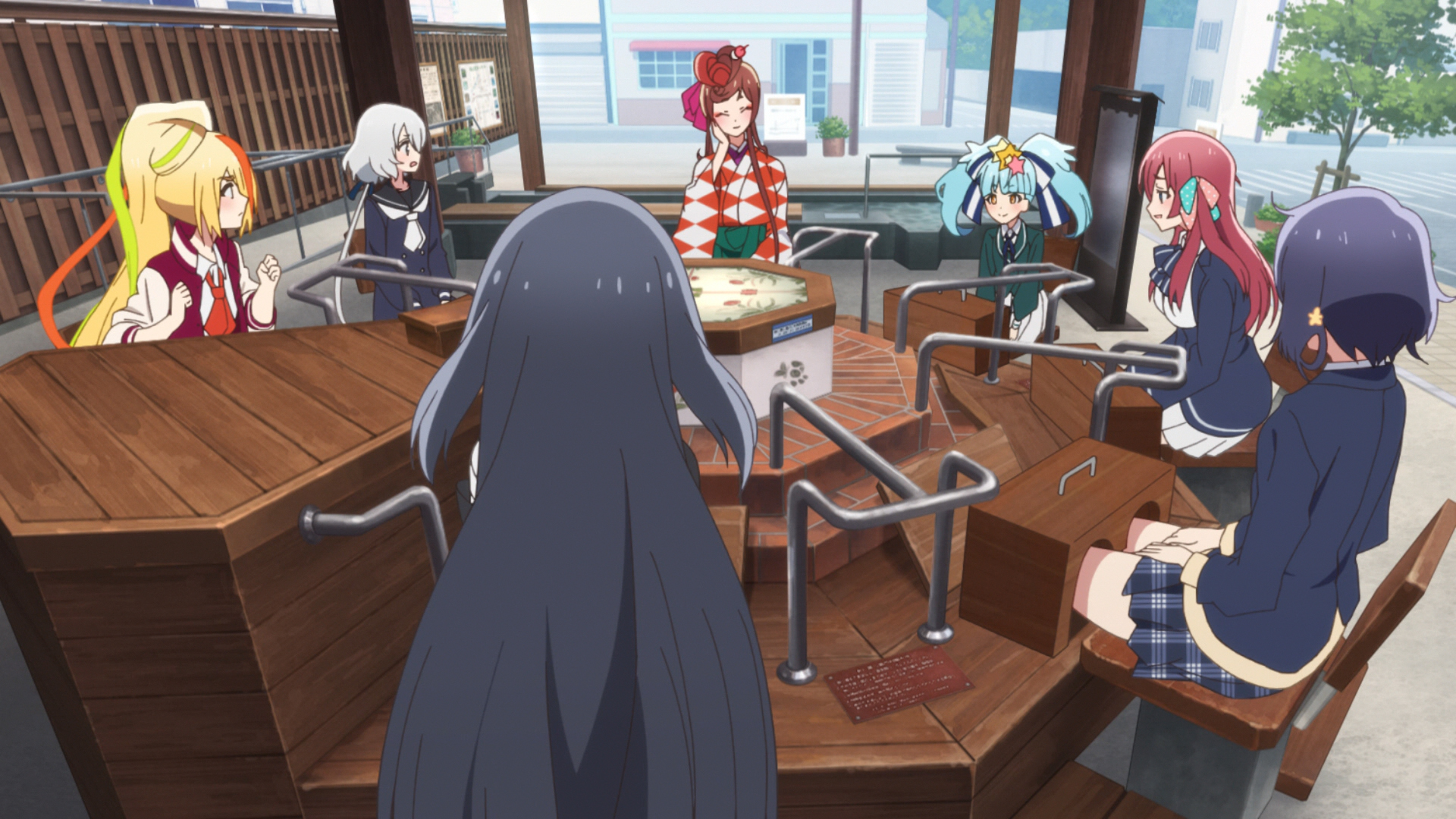
How they came to be that way is more heavily explored in the second half of the series, as it challenges several of the characters to overcome the circumstances of their deaths. This is where the show feels a bit weaker, as while some really hit home as it tries to tackle specific things about culture and society, some aren’t as effective and occasionally feel like the show is running out of steam. Perhaps the most impactful of these stories is Lily’s, which reintroduces her as a transgender character and deals with both her dysphoria and her relationship with her father. The show handles this sensitive topic really well, and while there’s an element of humour around how she died, it never feels like it is being mean-spirited or transphobic, instead placing its focus more on the bittersweet tale of redemption and reunion between father and daughter. I also liked some of the other topics it touches on, such as the intense work pressure of being an idol, and how interactions between fans and idols can feel uncomfortable or creepy in a certain light.
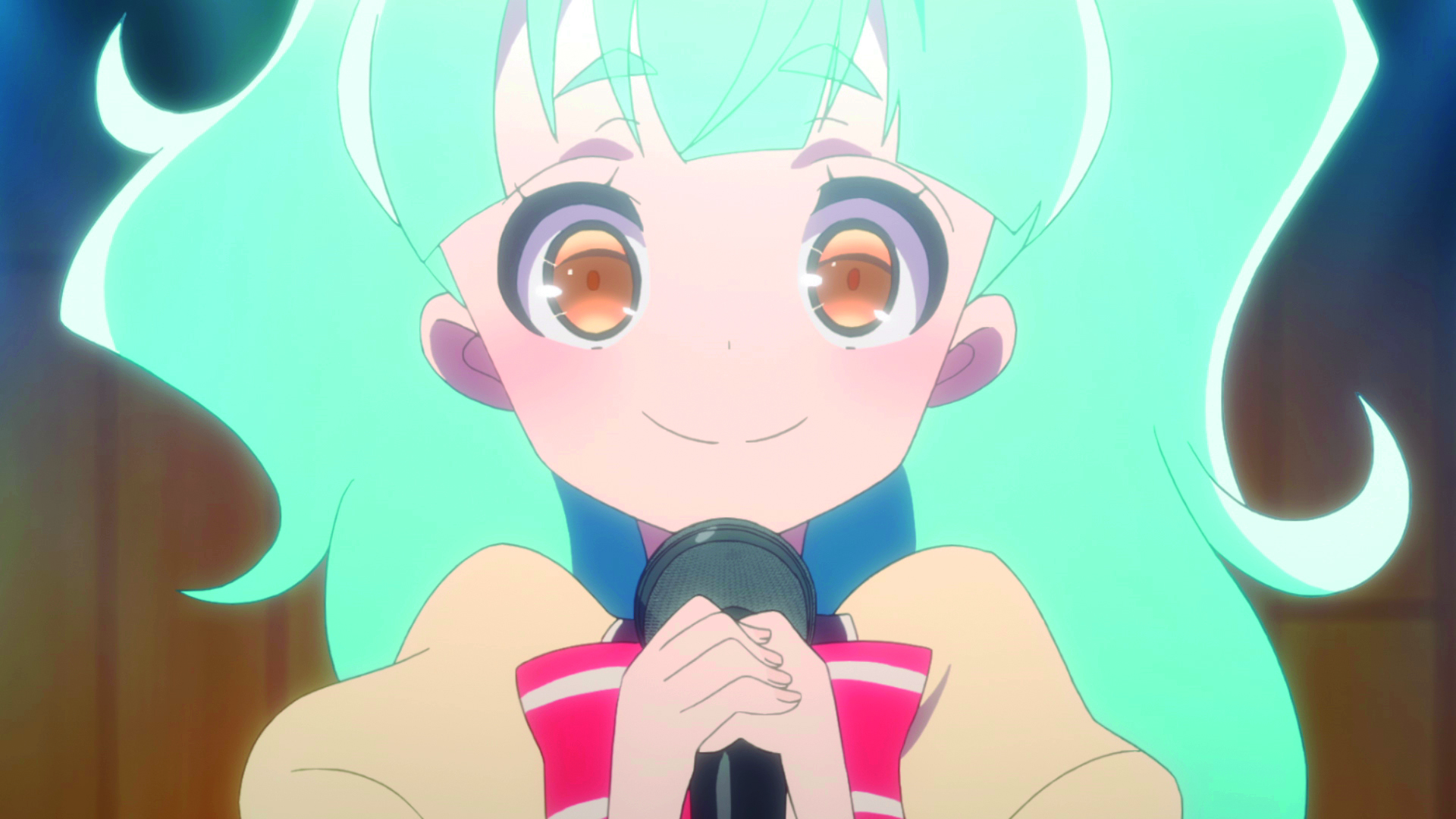
While owned by Avex Pictures and Cygames, animation is handed off to MAPPA, who do a really good job of bringing the characters to life with some excellent animation work that combines the cute with the creepy, particularly excelling when the girls’ zombified bodies fly apart and come back together in all kinds of weird angles. They also make a good effort in the CGI concert sequences, and while the switch in style is noticeable and it may not be as nice-looking as some other idol shows, it’s not particularly janky and clearly has had some effort put into it.
The show’s music is also particularly strong, with it featuring some pleasing J-Pop numbers such as Iron Frill’s “FANTASTIC LOVERS”, along with some more intense tracks such as “Atsuku Nare” by Franchouchou and their catchy main song “Mezame Returner”. These are, however, overshadowed by the show’s insane tokusatsu-styled opening, which sees the girls battling a giant shrimp-like kaiju backed by the song “Adabana Necromancy”. It’s certainly one of the most impressive opening sequences I’ve ever seen, and I get the feeling that it was at least a little bit inspired by Momoiro Clover Z, as it’s exactly the kind of thing that they would do.
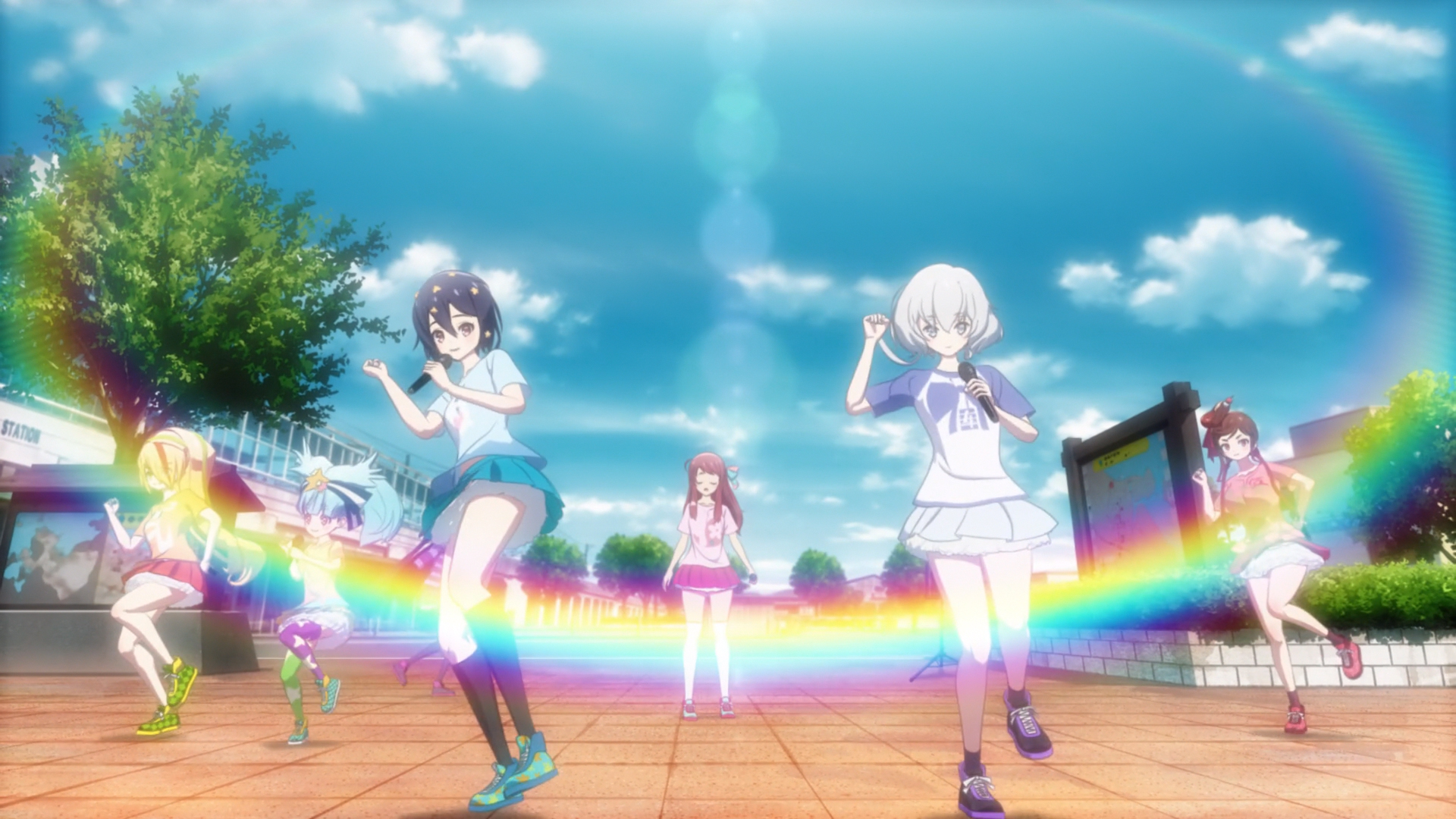
Quite a few of the Japanese voice actresses have singing credentials or come from major idol acts such as Minami Tanaka (formerly of Wake Up! Girls) who voices Lily, and Asami Tano (Saint Snow’s Sarah from Love Live! Sunshine!!) who voices Saki, so there’s a wealth of talent that is shining through here. The hidden gem, however, is Mamoru Miyano, who just goes to town in his role as Kotaro. The line delivery is brilliant and he puts so much energy into it that he threatens to overshadow the rest of the cast. The character’s design is also said to be based on the man himself, while also serving as a cheeky nod to PriPara’s Meganii-san, whose design is uncannily similar.
The English dub is an entirely different experience altogether, with them admirably replacing a lot of the songs with versions done by the English voice cast. While they have done a good job in localising it for a Western audience, I can’t help but feel something is missing, with particular elements of Japanese idol concerts, such as the some of the chanting being lost in translation, while the characters have an American twang to their voices and sound more mature than their Japanese counterparts. I will, however, praise Ricco Fajardo, whose Kotaro comes very close to being an exact match for Miyano’s.
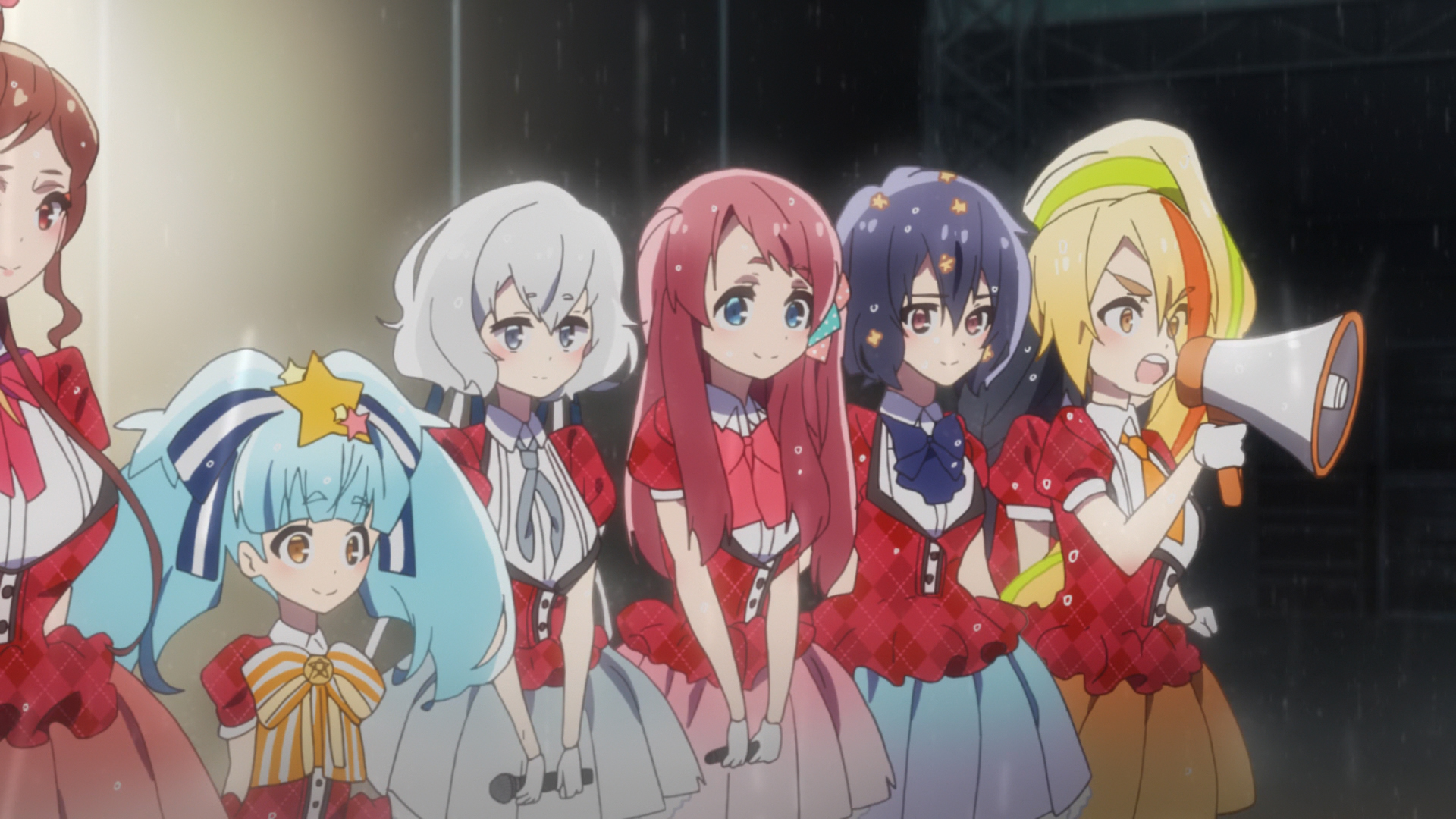
Manga Entertainment’s release of the series features all twelve episodes across two discs, available as a standard edition Blu-ray or DVD as well as in a collector’s edition set with an art book and art cards. On-disc extras are limited to an audio commentary with the English dub cast for Episode 2 and clean opening and closing titles.
Apart from a slight dip in its momentum towards the end, Zombie Land Saga is a runaway train of humour and emotion, taking an inspired idea of putting together idols and zombies and making it work with ease. With adorable and well-written characters, fun, moving songs and endless laugh-out-loud moments, this is a series that anyone can enjoy, whether you are an idol fan or not.


